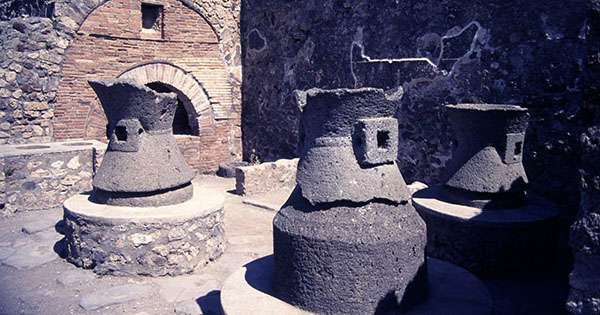The eruption of Mount Vesuvius in 79 CE killed and destroyed the city of Pompeii and its residents, but it did at least free the slaves who had enslaved for centuries. These ancient servants and their stories have buried in ash for two millennia, but the discovery of a wonderfully well-preserved slave chamber has finally brought their limited existence to light. The room gives “a glimpse into the perilous reality of individuals who seldom appear in historical documents, written almost entirely by males belonging to the elite,” according to Gabriel Zuchtriegel, director general of the Archaeological Park of Pompeii, who announced the remarkable find.
The chamber discovered in a home in Civita Giuliana’s suburban property, around 700 meters (2,300 ft) north of the city center. Excavators unearthed the remnants of a ceremonial chariot and three horses in neighboring stables earlier this year, and the residents of the newly excavated slave quarters presumably tasked with caring for the vehicle and animals. A wooden cabinet has fabric and metal patterns that appear to be part of the horse’s saddle, as well as the hull of a chariot leaning against a bed, supporting this idea.
The room, which was just 16 square meters (170 square feet), had three primitive beds constructed of wooden planks that could adjust to the user’s height. Two of the beds were 1.7 meters (5.58 feet) long, while the third was merely 1.4 meters (4.6 feet), indicating that the chamber had housed a slave family of two adults and a kid. The little chamber served as a storage room in addition to sheltering the slaves, as demonstrated by the existence of eight storage jars known as amphorae. The slaves would have used a chamber pot to relieve themselves, according to archaeologists.
The room’s outstanding level of preservation, according to the Pompeii Archaeological Park, is because it has remained encased in cinerite, a form of volcanic ash rock. While not all of the slave quarter’s artifacts have survived, their impression has, allowing researchers to construct plaster castings of these old artefacts, similar to the more renowned casts of the volcano’s victims.
Unfortunately, robbers have looted much of Civita Giuliana over the years, and the park claims that some objects from this slave chamber may have stolen before archaeologists could explore it. Even without the presence of large ‘treasures,’ Zuchtriegel views the find as “probably one of the most fascinating finds throughout my existence as an archaeologist.” “The essential wealth here is the human experience, in this case of ancient society’s most vulnerable members, to which this room is a singular witness.”
















